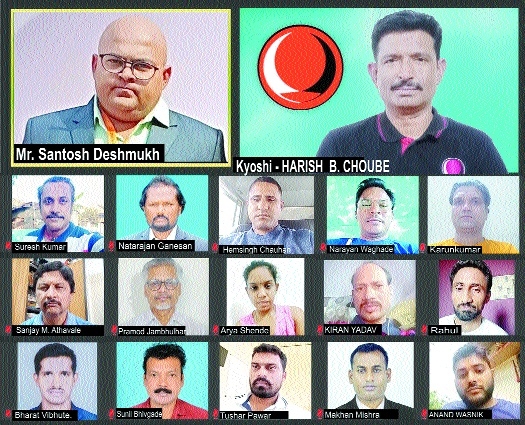‘Grappling does not include use of weapons’
| Date :11-Jun-2021 |

Principal Correspondent :
“GRAPPLING is a type of sport which is also used in various forms of martial art, wrestling, judo, sumo among others. Grappling refers to techniques, maneuvers, and counters applied to an opponent in order to gain a physical advantage, such as improving relative position, escaping, submitting, or injury to the opponent,” said Santosh Deshmukh, General Secretary, Grappling Association of Maharashtra, Joint-Secretary, Grappling Federation of India, International Referee, United World Wrestling. Deshmukh was speaking during the online Karate and Sports Webimar for Physical and Spiritual Development of Sportspersons organised by Karate Budokan International (Vidarbha Region). The webinar is being organised by Karate Budokan International (Vidarbha Region) and is hosted by Kyoshi Harish Choube, Black Belt 7th Dan, National Chief Instructor and Examiner, Karate Budokan International. Explaining the sport and its technicalities further, Deshmukh said, grappling is a general term that covers techniques used in many disciplines, styles and martial arts that are practised both as combat sports and for self-defence. “Grappling does not include striking or the use of weapons. However, some fighting styles or martial arts known especially for their grappling techniques teach tactics that include strikes and weapons either alongside grappling or combined with it,” said Deshmukh.
The international referee said that the degree to which grappling is utilised in different fighting systems varies. “Some systems, such as amateur wrestling, pehlwani, pehlwani submission wrestling, judo, sumo, kalaripayattu and Brazilian jiu-jitsu are exclusively grappling arts and do not allow striking. Many combat sports, such as shooto and mixed martial arts competitions use grappling while retaining striking as part of the sport,” informed Deshmukh. “In these arts, the main object is either to take down and pin the opponent, or to catch the adversary in a specialised chokehold or joint lock which forces opponent to submit and admit defeat,” he added. Explaining further, Deshmukh said that there are two forms of dress for grappling that dictate pace and style of action: with a jacket, such as a GI or kurtka, and without (No-Gi). The jacket, or “Gi”, form most often utilises grips on the cloth to control the opponent’s body, while the “No-Gi” form emphasises body control of the torso and head using only the natural holds provided by the body.” Deshmukh informed that for U-13, U-15 and veterans categories the duration of a bout is one period of 4 minutes.
“For cadets, juniors and seniors the duration of a bout is one period of 5 minutes. For all the competitions, the timing displayed on scoreboards start from 5 to 0 minute (from 4 to 0 minute for U-15, cadets and veterans). The winner is declared by the sum of points scored at the end of the regular time. Technical superiority is reached when there is a difference of 15 points. This automatically leads to victory and end of the bout is whistled. The submission automatically stops the match,” he said. Deshmukh also explained the rules and various positions of the sport. “There are various positions like open guard restart position, side mount restart, full mount restart, back mount restart.” The point system was also explained thoroughly. Renshi Karunkumar Tirpude, Karate Budokan International, proposed a vote of thanks.